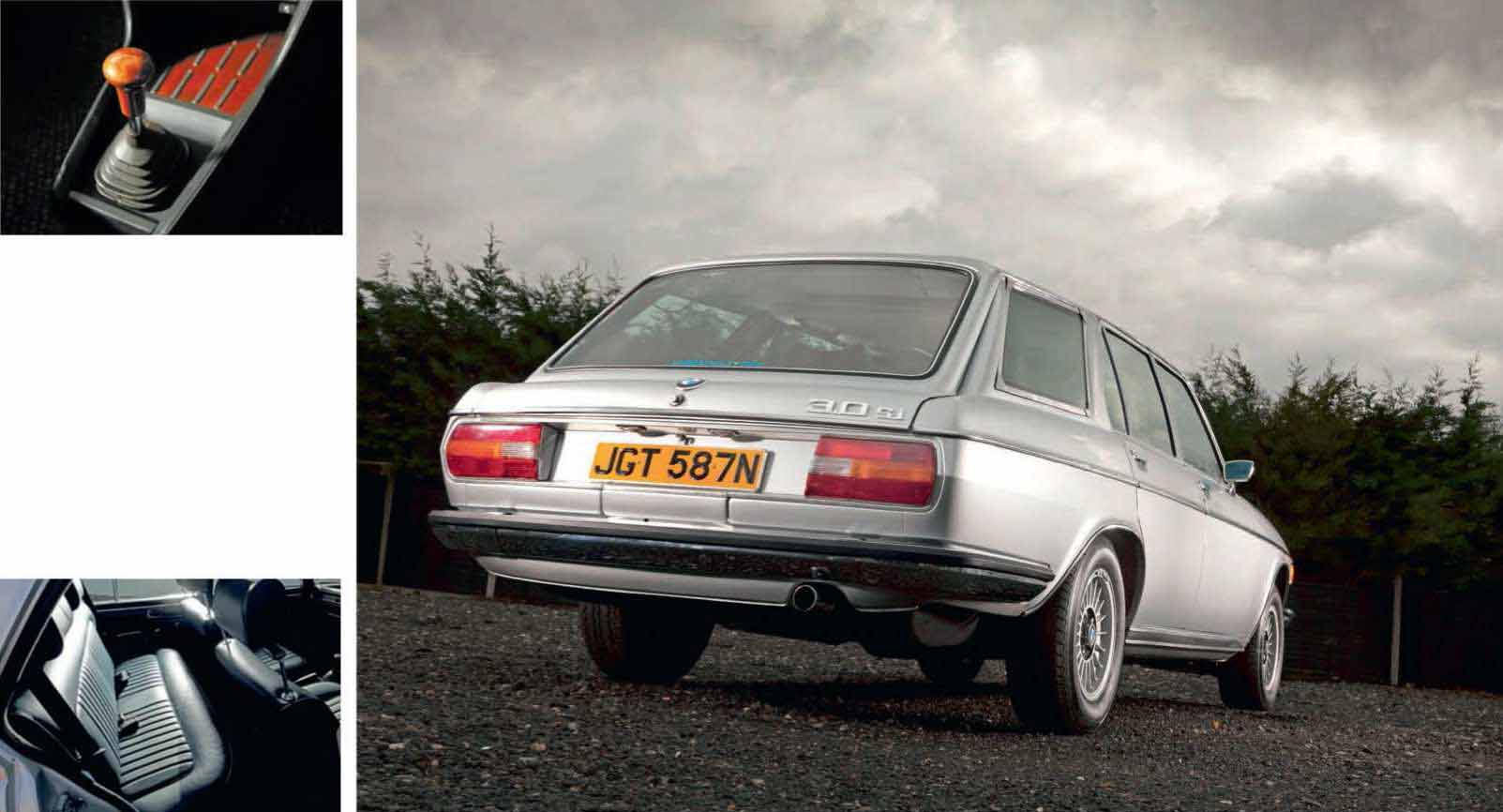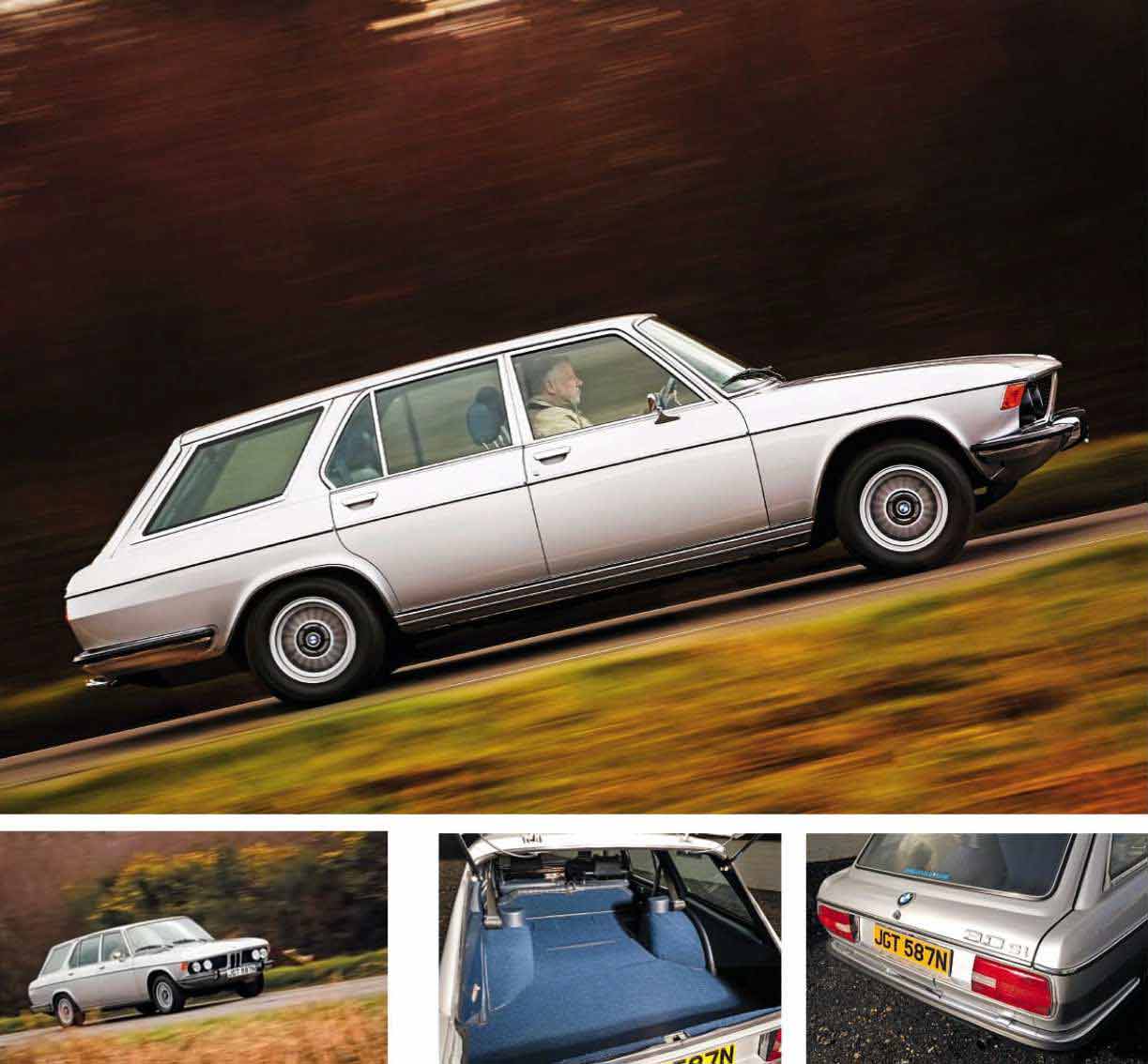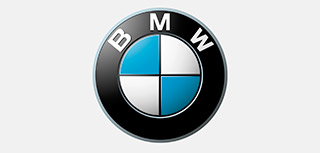
Last Man Standing. From Munich, via Fulham Super-rare BMW wagon conversion. A very British BMW – E3 aficionado Buckley tries the only running estate. Martin Buckley tells the fascinating story of one man’s obsession with the BMW E3, and his painstaking quest to restore a super-rare estate to perfection. Photography Tony Baker.
Unless somebody out there knows any different, the car that you see here is the only running BMW E3 estate in existence. The subject of a sporadic but ultimately exacting 14-year rebuild, JGT 587N belongs to E3 enthusiast David Maughan of west London, who has had a passion for these big BMWs since boyhood.
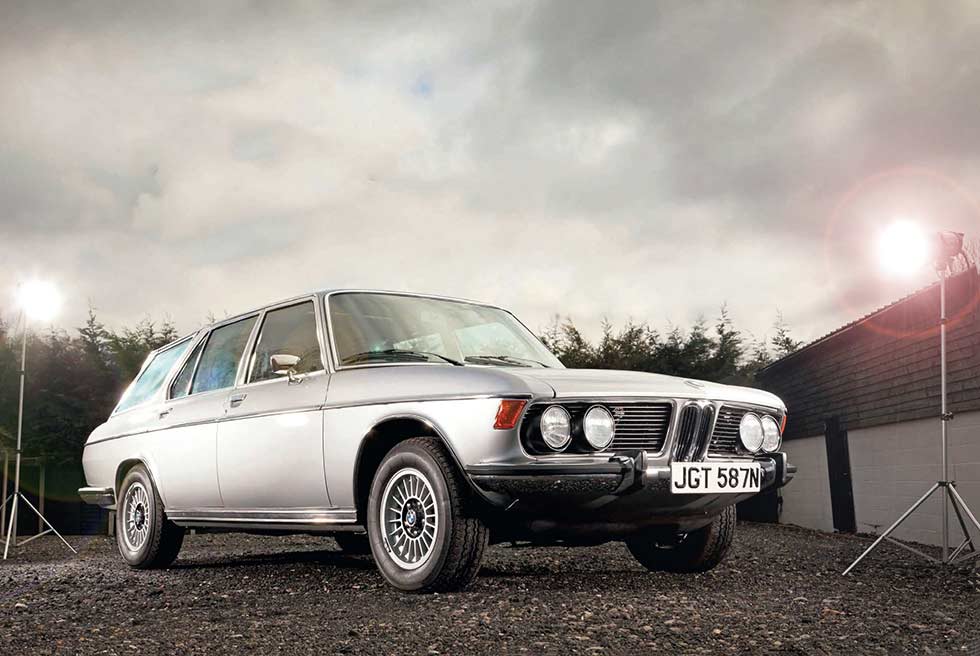
“The lead character in Man at the Top drove one; they filmed the series at the end of our road in Barnes,” Maughan recalls, “and when, later, a family friend gave me a ride in his 2500, I just got swept away by the feel and even the smell of them.” He consummated the affair when he purchased a standard 3.0Si, having been inspired by a feature in C&SC in 1992. “In fact,” he points out, “I still own the car from that story and I have just parted with a lovely 2500 saloon.”
Maughan’s relationship with the estates goes back to ’94 when he captured a project Si (JGT) that had been purchased new by King Constantine of Greece. It had also, supposedly, been an Alpina works tow car, but there was no evidence of that. The story gets complex from here, but Maughan basically acquired a second Si estate in ’95 – also very much a project but not as rough as his first – that ended up being broken for spares.
Originally white, JGT was converted when it was secondhand in 1981. Restoration got under way in the early 2000s, at which point a third estate (a 3.0Sa) was bought and broken for bits. Meanwhile, the rebuild of JGT stalled while Maughan searched for another company to do the job. In 2008, he finally settled on BMW specialist The Werk Shop in Chicago, having heard that it had just done a beautiful 2002 for Roger Penske. “It sort of made sense,” he says, “because I was doing a lot of work in the States at the time, although it turned out to be a textbook example of how not to manage a restoration!”
Determined to finally get himself an exceptional E3 estate, Maughan decided that the car would be restored to “better than new” condition. This involved a complete replacement roof, three new doors and sills, plus a no-expense- spared, nut-and-bolt mechanical overhaul. The spec also included a fall retrim in blue leather.
At around this time, another 3.0S automatic station wagon was discovered, which turned out to have been the tow car for Roger Bell’s Group 1 3.0Si E3 racer. Sadly, it too was unfeasibly rusty – most E3s were, which is why so few survive – and it was shipped out to Chicago as a third spares source and reference for the rebuild.
Unsurprisingly, in the midst of all this, Maughan has managed to unearth the history surrounding the E3 estates, which, in 135mph
3.0Si form, were probably the fastest and most expensive load carriers of their time and thus very rare. To date, he has only accounted for nine (of which at least three have been scrapped) and thinks that about a dozen were built in total. Of those, three (or possibly four) were fuel-injected Sis with manual ’box and 200bhp, while another three were carburettor 3.0 S manuals and Sa three-speed autos. Two 2500s are also confirmed as having been transformed into wagons.
They all came with a vinyl top, more than likely to disguise the unsightly join between the saloon roof and the extended portion that was crudely butted together, pop-riveted and spot- welded. All were right-hookers converted in the UK between 1972 and ’1975, although, as already mentioned, JGT was done in 1981 – long after the E3 had made way for the 7 Series.
The estates were a joint venture between the official importer and one of the biggest BMW dealers, Langley Motors of Thames Ditton. New or used cars were eligible and orders were taken via Langley or BMW Park Lane.
Maughan has not established how much the conversion cost, but, given that Crayford wanted £1500 to do a similar job on a Mercedes-Benz W114, we can safely assume that it was something of that order. It would have boosted the price of the 3.0Si to well over £6000, before you had even specified your electric windows or sunroof. The model even had its own factory-style brochure entitled simply ‘The BMW Estate Car’ and showing a white 2500 auto (PLA 6L, last seen alive in 1991) on the lawns of Goodwood House.
These E3 wagons were born out of a tradition of low-volume British coachbuilt estates of the 1960s and ’70s, normally associated with the likes of Radford and Crayford (see panel). It was notyet a market that the big manufacturers were comfortable committing themselves to, thus leaving a niche for specialist bodyshops to build – very much to order – short runs of large, high-performance, tailor-made station wagons based on luxury saloons for those well-heeled clients who did not want to forgo power, status and refinement in the name of utility.
This seems to have been a peculiarly British phenomenon. In Europe, the Familiale or Kombi was seen as a vehicle that you drove out of necessity rather than choice, with few status benefits. Certainly BMW in Munich, beyond its trio of E3-based rally service barges (see panel on pi69) was totally indifferent to the notion of an estate based on its flagship model.
Even so, the autonomous and highly successful BMW Concessionaires (GB) Ltd – formed in 1966 by David Blackburn and based on Chiswick High Road – would have had no trouble convincing the Germans that it was a good idea. BMW GB, after all, sold a higher proportion of top-end six-cylinder tin-tops than any other territory and would have pointed to the relative success of FLM (Panelcraft)’s Rover P6-based Estoura.
In fact, it was to FLM (Panelcraft) in Fulham that BMW Concessionaires turned when the idea of a ‘big six’ estate was mooted. Staffed by mainly ex-James Young craftsmen, FLM had done Aston shooting brakes for Radford and most of Crayford’s station wagon work. According to Barry Priestman of the Crayford Convertible Car Club, the prospect of a BMW estate at the ’1972 Earls Courtshow gave Crayford leverage with Mercedes-Benz UK to supply it with S-class saloons for its in-house conversions.
The key to the creation of an E3 wagon was finding a rear hatch from a production car. In this case, Panelcraft boss Nobby Fry merely ‘borrowed’ Crayford’s idea of the Austin Maxi pressing (with hinges and glass) and welded in the bottom part of the original BMW bootlid. The high rear sill was not particularly practical, but probably a wise move given that the shell had lost the benefit of its rear bulkhead. The rear side windows were bespoke to the car – and lacked the tumblehome of the door glass – but the 6ft long (4ft with seats up), 4ft 6in-wide load space was fully carpeted. As well as the standard heated rear window and wiper, you could specify a towbar, a roofrack, extra courtesy lights and a dog guard – plus the usual BMW extras.
Gruesome as it sounds, the Maxi tailgate is a surprisingly well-integrated arrangement when you witness the car in the metal. The interface between the C-posts and the fabricated roof is less happy, but overall the handsome sharknosed E3 body admirably lends itself to the estate conversion. David Maughan says that he couldn’t face reinstating the vinyl roof and it looks all the better for it. He also points out that the shape of the windows and trim around the side glazing varied slightly in detail treatment between his three parts cars, indicating that Panelcraft either made it up as it went along or subcontracted the jobs to other bodyshops.
It takes a while to work out that you simply give the rear squab a good hard tug to get its catches to release. With the cushion folded forward – and the headrests removed – you get an excellent, flat load space only slightly hindered by the suspension turrets. Maughan says that he would like to put some sort of brace between them to reinstate some rigidity into a shell that wasn’t notably stiff even when new.
Not that you notice any problems once under way. Yes, you can hear the panels over the spare wheel rattling a bit, but otherwise this estate feels as tight and sorted a BMW E3 as I have ever tested. It’s so refreshing to drive a car with such a simple but good-looking dashboard and such wonderfully open views all round from an alert driving position that seems to add to the injected 3-litre’s eager sense of purpose.
Even allowing for the fact that the M30 straight-six has done only 1000 miles since a rebuild, it feels almost indecently potent – thrusting you back in the seat with a turbine hum of expensive refinement in the low first gear. From there, the urge barely lets up in second or third and, should the road (and Plod) allow, it would be quite natural to change into top at 90mph, well short of the 6500rpm redline.
The slick, positive, short-throw gearbox is beautifully matched to the characteristics of an elastic, super-smooth engine, which is as happy to mooch along as it is to rev. That said, resisting the temptation to level the throttle in this lovely car would be a severe test of any keen driver.
The power-assisted ZF-Gemmer steering was an object lesson in feel and precision in period and it’s amazing just how much grunt the limited-slip differential lets you pour on. In my memory, all of these old ’70s BMWs went sideways in a trice, but this Si wagon just digs in, bites down and boosts you up the road.
Is it worth the £79,995 that marque expert Classic Heroes is asking for it? The market will decide that, but boss Barney Halse tells me that the factory museum has shown an interest – and I suspect that it would not be possible to restore one to this standard even for that sort of money.
Driving this Si station wagon is a sobering reminder of how fabulous these big BMWs really were when new, an irresistible combination of aggression, agility and refinement that was not available in any other large saloon – never mind a five-door estate.
Thanks to Classic Heroes, which is selling the Si: 01825 732817; www.classicheroes.co.uk
Glory days of the coachbuilt estate car
Busy with Ford and BMC convertibles, Crayford turned to its friends at FLM (Panelcraft) Ltd to build its various estates and hatchbacks, initially the BMC 1100 and 1800, a handful of Austin 3 Litres (see Gallery) and from ’1969 a run of 400 Mercedes W114s, which perhaps encouraged Stuttgart to go ahead with its own W123 model. Certainly Mercedes, after some reticence, was impressed enough to officially sanction the W114 wagons. Crayford and Panelcraft also produced estates based on the W108/W109 S-class, at least one of which was a 300SEL 6.3 W109.
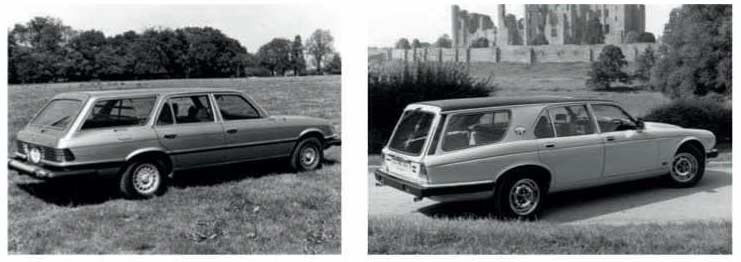
For the W116 S-class, which appears to have been an entirely Crayford production (above left), the faithful Maxi door was abandoned because it was too narrow. Boss David McMullan sent his wife off into Gatwick airport car park with a tape measure in search of a suitable replacement, which turned out to be the Ford Granada tailgate. The late-’60s Rover P6 Estoura was the idea of Panelcraft’s Nobby Fry; Crayford only agreed to do the marketing if he altered the bizarre sloping roof on the prototype. He agreed, and it is thought that as many as 400 were sold, mostly V8s, via HR Owen and Hurst Park Automobiles. The rear door was off the ADO16 estate.
There was an estate adaptation of the first-generation Audi 100 C1 by Crayford – plus it did one-off three-door oddities on the TR7 and Mercedes-Benz 450SLC C107 – but by the ’80s there were plenty of factory-built executive hatchbacks that squashed the demand for bespoke makeovers.
Having said that, Jaguar had not succumbed to the idea of an XJ estate; it was left to established coachbuilder Avon to produce its odd-looking wagon version of the new Series III (above right) in 1980, complete with a Renault 5 tailgate.
More successful, and much prettier, was the XJ-S Eventer by Lynx. The firm stitched itself up, though, by choosing an obscure donor back door: there weren’t many Citroën Ami estates in breaker’s yards even in the early 1980s!
Factory wagons
The UK-market E3 estate cars were probably influenced by the three Kombis built at the factory in Munich in the early ’70s, strictly for the use of the Motorsport department. These cars had front seats only, with a grille behind to restrain the tools and spares in the load bay. There was even an area for the mechanics to sleep; useful given that the wagons would be used on rallies as far apart as Monte-Carlo, the 1000 Lakes and the Acropolis, providing service for the works 2002s.
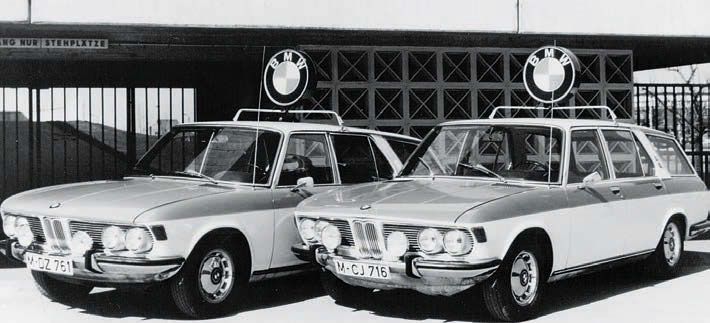
Often overloaded (a rear wheel once came off one of them on the way to an event), the wagons were expected to pull a 2002 rally car on a trailer, while lugging all the parts. Special features included roofracks for spare wheels and tyres, plus a roll-bar. Running on steel wheels, they were based on manual 3.0Ss and painted blue-and-white. The rear side windows were Perspex and the tailgate is thought to have been adapted from a Ford Taunus. The Kombis were retired after five years in favour of a full-sized transporter. Today only one survives and it is currently being restored.
Photos
From top: ground-up rebuild included many factory panels, plus all-new brightwork and seals, and a bare-metal respray in Polaris – 6in-wide ‘cotton reel’ alloys provide the perfect finishing touch and numberplate folds down to reveal fuel-filler cap; Si came only as a four-speed manual; full retrim in hide.
Clockwise, from left: sweet M30 straight-six engine is fuelled by Bosch D-Jetronic injection; plain but superb quality cabin features the ergonomics that would become a BMW staple – note the correct-style coco mats; original factory-fit Blaupunkt stereo radio. Inset: period brochure for the Estate.
Clockwise: E3 estate retains the saloon’s elegant lines; adapted Maxi tailgate blends in well; load bay – 6ft long with rear seat folded – is trimmed to BMW standard.
